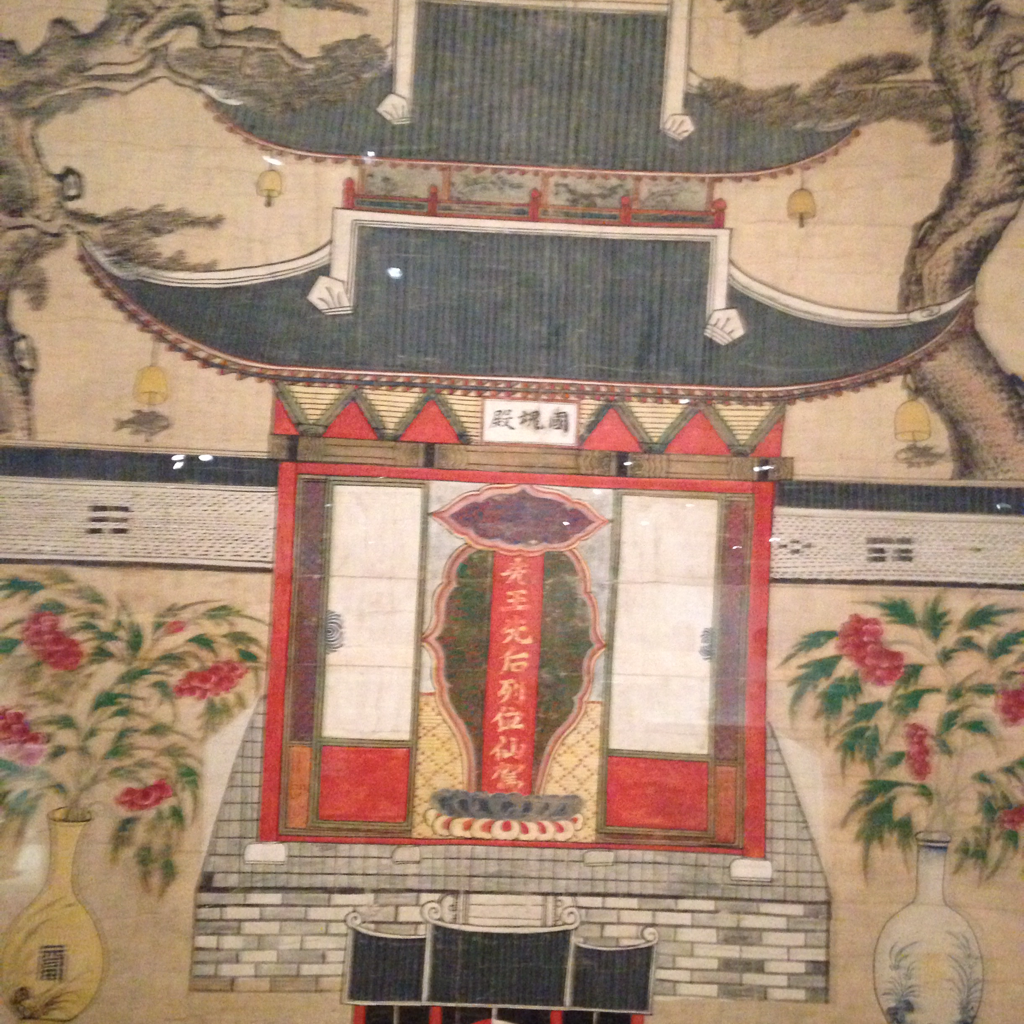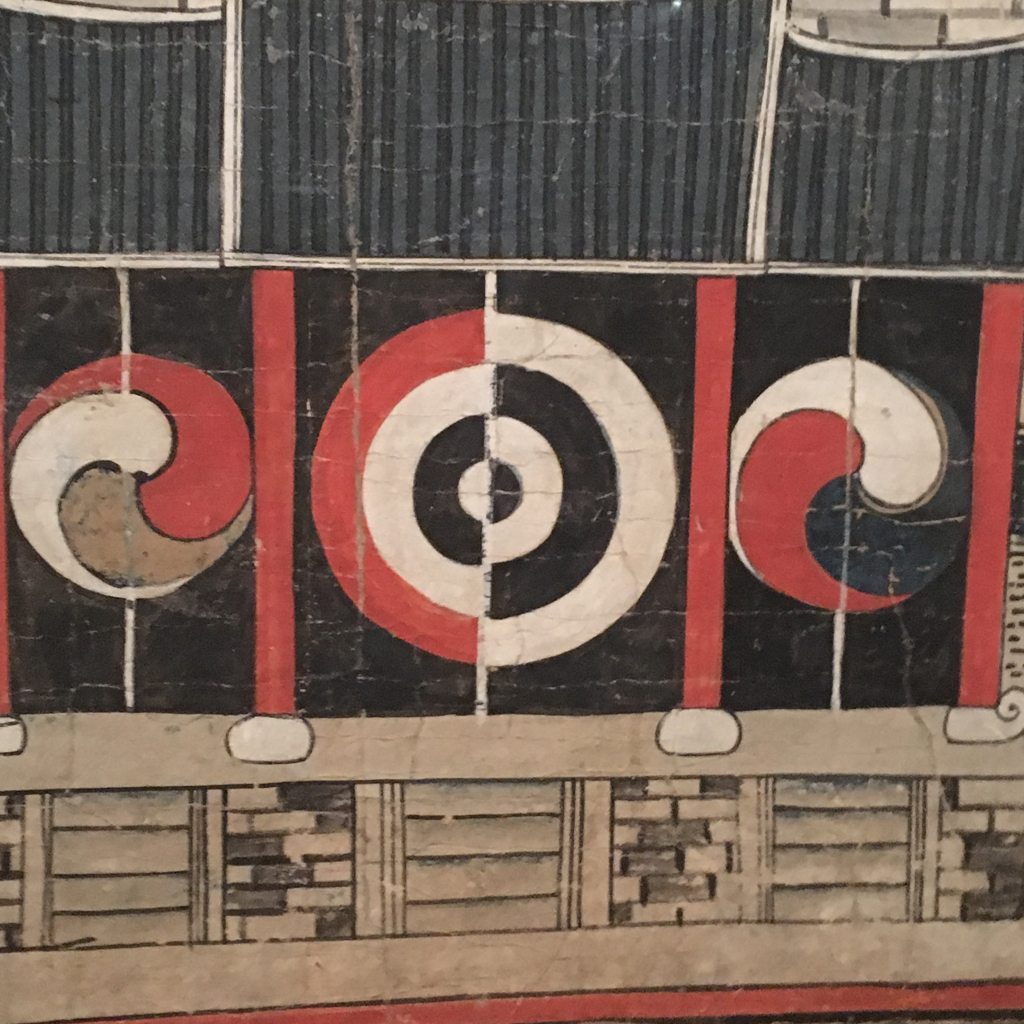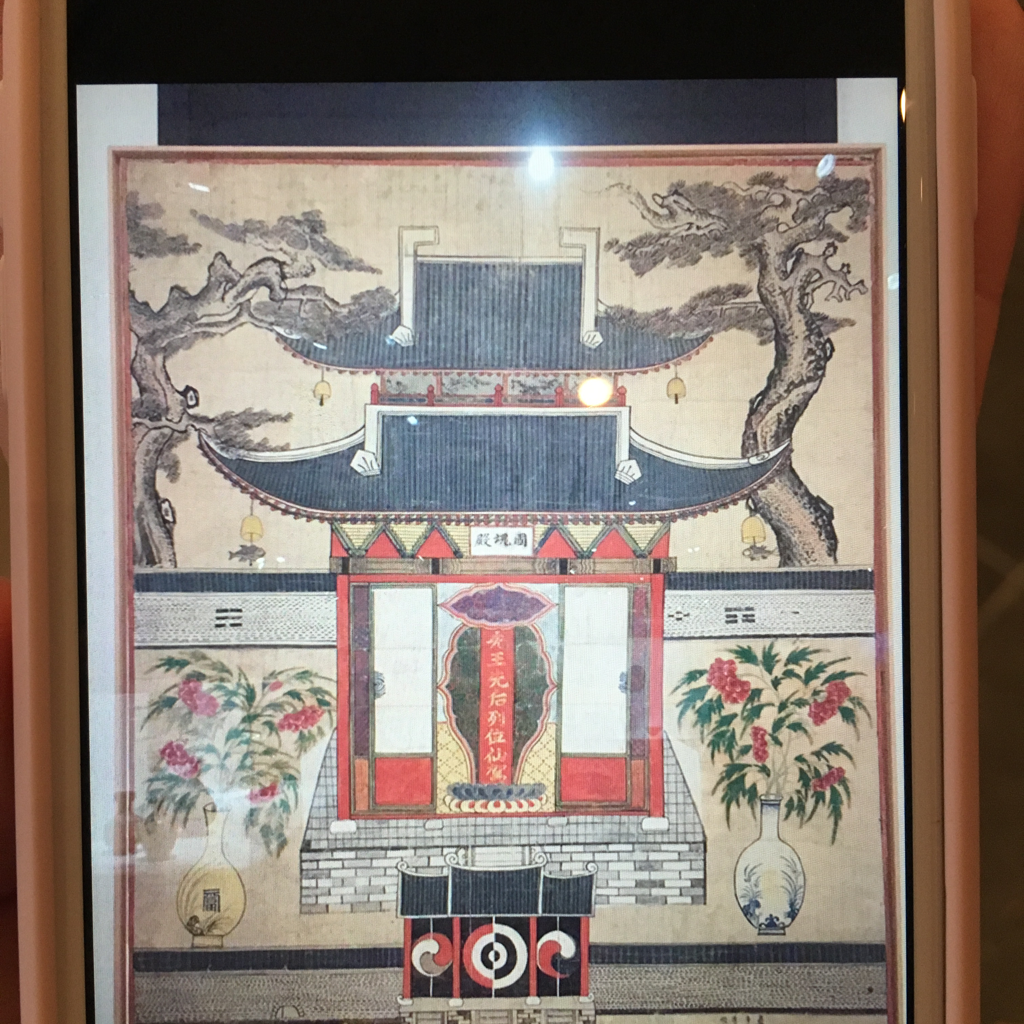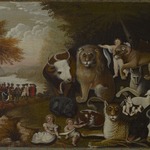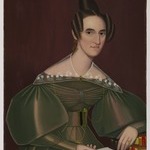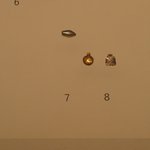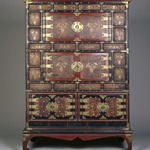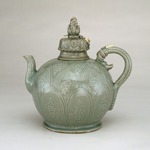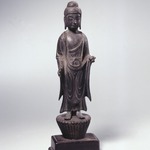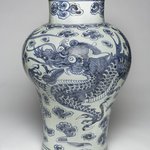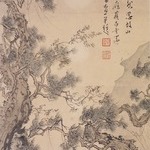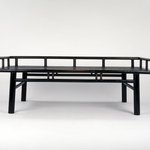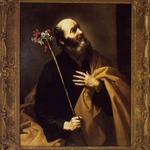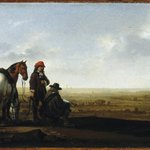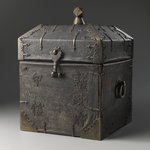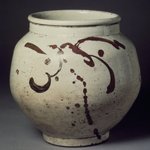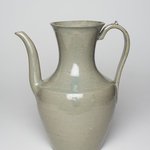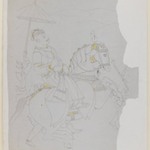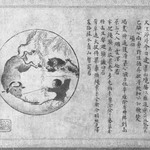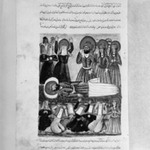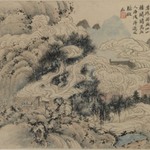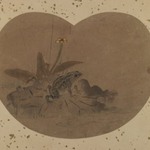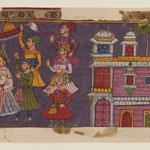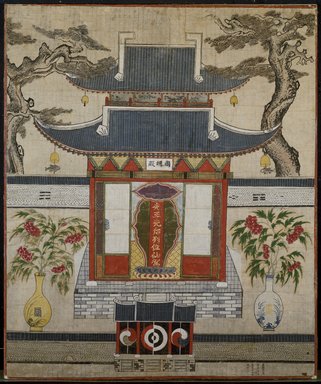
Spirit Shrine
Asian Art
Every yangban (aristocratic) home was expected to have a shrine in which the spirits of the family’s ancestors were housed and honored. For wealthy families, the shrine was a separate building in the family compound, but in smaller homes the shrine was a simple cabinet or even a painting of a shrine building. This image of an ancestor shrine is far larger than most, and indeed its inscriptions indicate that it was made for use in a public building rather than in a family home. The honorees are the king and queen, who are enshrined here with an elaborate plaque. It is likely that government workers worshipped their rulers while standing before this painting, much as families would have worshipped their grandparents before smaller versions at home.
MEDIUM
Ink and color on paper
DATES
June 1811
DYNASTY
Joseon Dynasty
DIMENSIONS
67 5/16 × 56 5/8 in. (171 × 143.8 cm)
frame: 70 × 59 1/4 × 2 3/4 in. (177.8 × 150.5 × 7 cm) (show scale)



INSCRIPTIONS
Inscribed, in the center: "Peace for previous King and Queen [unnamed]"; and in the lower-right corner: "the sixth month of the sixteenth year of the Chia-ching era [1811]"
COLLECTIONS
Asian Art
ACCESSION NUMBER
86.25
CREDIT LINE
Designated Purchase Fund
CATALOGUE DESCRIPTION
From "Korean Art Collection in the Brooklyn Museum" catalogue:
Image of a small shrine situated on a platform on a terrace.
Paintings of shrines (gammo yeoje do) often replaced actual ancestral shrines in the late Joseon dynasty. This example is particularly interesting because it is dedicated to the king and the queen of the state instead of family ancestors. According to the inscription on the painting, the painting was completed in the sixth lunar month of 1811 at the Hall of East Fragrance, a place that most likely belonged to a local government office. It is an important historical document that proves that shrine paintings were not only in demand by commoners but also by public offices.
Mounted in Western style (i.e. no longer in hanging scroll format).
From Catalogue Card:
Spirit shrine paintings were specifically intended for use in Joseon dynasty homes; an ancestral shrine was an integral part of every Korean house; ancestor worship was the primary duty of every Korean family, who were morally obliged to worship their ancestors for at least three generations back. A wealthy household maintained a separate room, or even a separate building as an ancestral shrine. The room was equipped with special furniture and utensils for the rituals of ancestor worship; altar tables and offering stands as well as a small but very high chair that served as a throne for the ancestor’s spirit. "Kam Mo Yo Je Do" means "Shrine Where the Ancestors Come When Worshipped." The space between the open doors of the tile roofed shrine in the painting was left blank. On the anniversary of an ancestor’s death, a slip of paper inscribed with his posthumous name was pasted temporarily on the blank space. This painting commemorates royal ancestors; the table is inscribed with the spirit names of a former king and queen. Dated at the lower right: June 16th year of the Chia-ch'ing reign (1796-1820). It is usual for the dates on Korean paintings to refer to Chinese Reigns rather than Korean ones.
MUSEUM LOCATION
This item is not on view
CAPTION
Spirit Shrine, June 1811. Ink and color on paper, 67 5/16 × 56 5/8 in. (171 × 143.8 cm). Brooklyn Museum, Designated Purchase Fund, 86.25 (Photo: Brooklyn Museum, 86.25_SL3.jpg)
IMAGE
overall, 86.25_SL3.jpg. Brooklyn Museum photograph
"CUR" at the beginning of an image file name means that the image was created by a curatorial staff member. These study images may be digital point-and-shoot photographs, when we don\'t yet have high-quality studio photography, or they may be scans of older negatives, slides, or photographic prints, providing historical documentation of the object.
RIGHTS STATEMENT
No known copyright restrictions
This work may be in the public domain in the United States. Works created by United States and non-United States nationals published prior to 1923 are in the public domain, subject to the terms of any applicable treaty or agreement.
You may download and use Brooklyn Museum images of this work. Please include caption information from this page and credit the Brooklyn Museum. If you need a high resolution file, please fill out our online application form (charges apply).
The Museum does not warrant that the use of this work will not infringe on the rights of third parties, such as artists or artists' heirs holding the rights to the work. It is your responsibility to determine and satisfy copyright or other use restrictions before copying, transmitting, or making other use of protected items beyond that allowed by "fair use," as such term is understood under the United States Copyright Act.
The Brooklyn Museum makes no representations or warranties with respect to the application or terms of any international agreement governing copyright protection in the United States for works created by foreign nationals.
For further information about copyright, we recommend resources at the United States Library of Congress, Cornell University, Copyright and Cultural Institutions: Guidelines for U.S. Libraries, Archives, and Museums, and Copyright Watch.
For more information about the Museum's rights project, including how rights types are assigned, please see our blog posts on copyright.
If you have any information regarding this work and rights to it, please contact copyright@brooklynmuseum.org.
RECORD COMPLETENESS
Not every record you will find here is complete. More information is available for some works than for others, and some entries have been updated more recently. Records are frequently reviewed and revised, and we welcome any additional information you might have.



